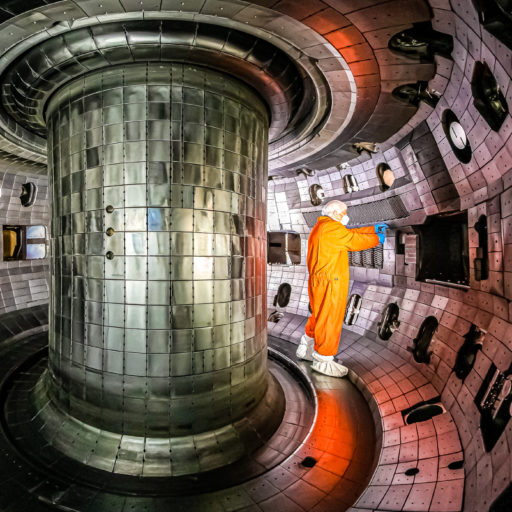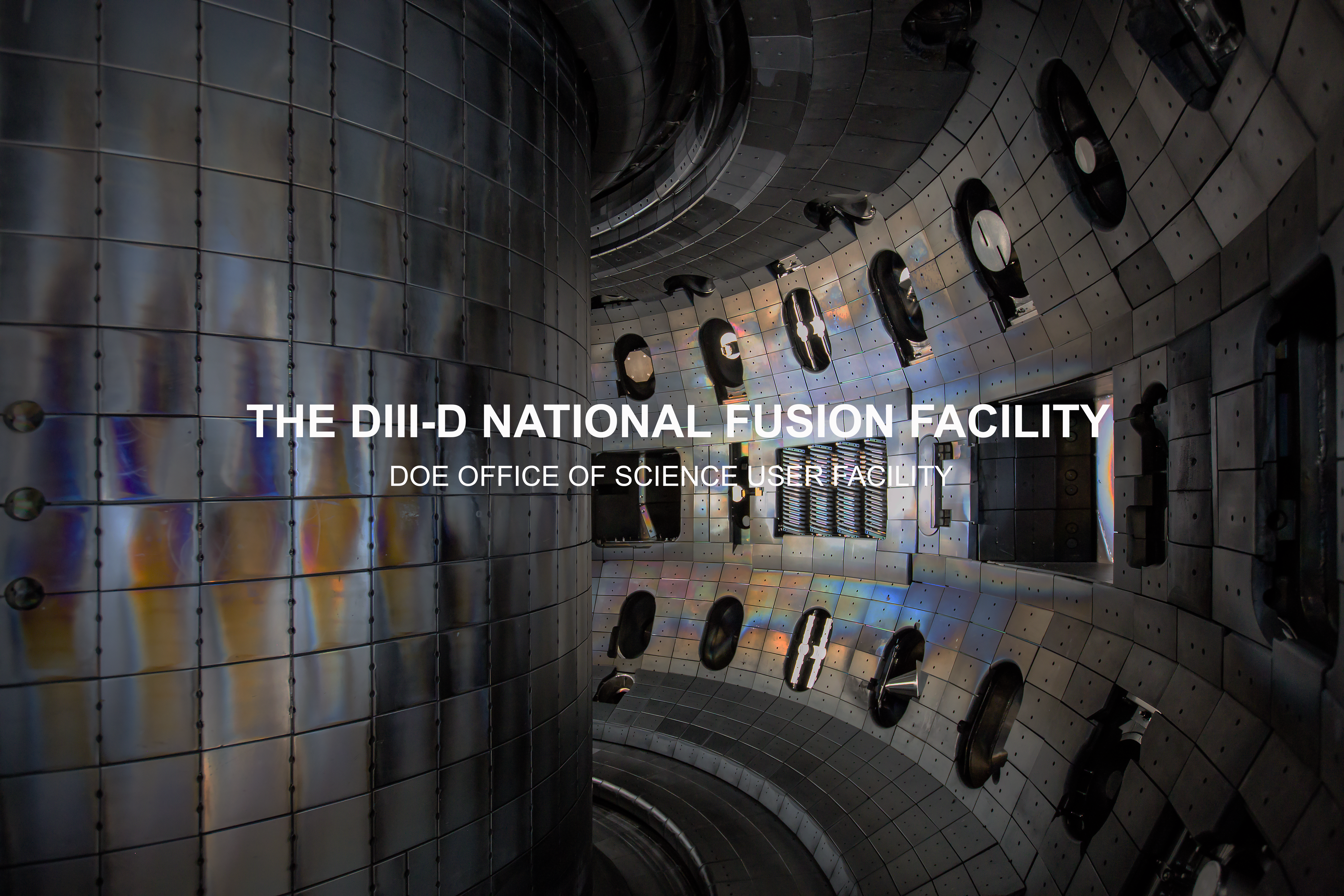DIII-D National Fusion Facility
DOE Office of Science User Facility
About the DIII-D National Fusion Facility

The DIII-D National Fusion Facility is a user facility of the U.S. Department of Energy, Office of Science.
An Office of Science user facility is a federally sponsored research facility available for external use to advance scientific or technical knowledge under the following conditions:
- The facility is open to all interested potential users without regard to nationality or institutional affiliation.
- Allocation of facility resources is determined by merit review of the proposed work.
- User fees are not charged for non-proprietary work if the user intends to publish the research results in the open literature. Full cost recovery is required for proprietary work.
- The facility provides resources sufficient for users to conduct work safely and efficiently.
- The facility supports a formal user organization to represent the users and facilitate sharing of information, forming collaborations, and organizing research efforts among users.
- The facility capability does not compete with an available private sector capability.
Office of Science Program Manager: Matthew Lanctot, Research Division of Fusion Energy Sciences program.
Operations
The DIII-D Operations Group is responsible for the safe operation of the facility. This world-class team of engineers, technicians and administrators ensures the continuous reliable functioning of the DIII-D tokamak, including running and maintaining all necessary primary systems and diagnostics. This team also enables continuous evolution of the facility and program capabilities, with regular upgrades and development and installation of new diagnostics. Thus, DIII-D has considerable experimental flexibility and extensive diagnostic instrumentation to measure the complex properties of tokamak plasmas.
The existing capabilities of DIII-D include a shaping coil system that allows the plasma cross-section to be widely varied, flexible heating and current drive systems, three arrays of 3D-field perturbation coils located both inside and outside the vacuum vessel, multiple disruption quench systems, over 100 state-of-the-art diagnostic systems to examine plasma parameters, and an advanced digital control system that provides dynamic inputs during experiments to achieve key preset plasma parameters. These capabilities have enabled several transformational discoveries, including establishment of the importance of plasma shape on performance, ELM suppression using non-axisymmetric coils, and sustained operation near the ideal wall stability limit. Furthermore, DIII-D regularly undergoes upgrades to add new diagnostic and experimental capabilities and modernize existing systems. This ongoing work by the Operations group enables DIII-D to function as one of the best diagnosed magnetic fusion experiments in the world, providing an essential program for developing key scientific insights and technological breakthroughs to support the development of fusion energy.
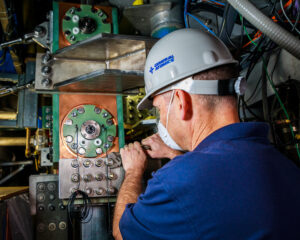
Research
The DIII-D Experimental Science team seeks to pioneer the scientific basis, technologies, and integrated solutions needed to make fusion energy a reality, concurrent with the development of the workforce required to achieve this. The research program at DIII-D takes a holistic approach to test and integrate multiple solutions and approaches with the aim of creating a functional regime for fusion energy production. This work leverages the facility being sufficiently large and powerful to be relevant to modern fusion energy production questions while remaining small enough to rapidly evolve in response to changing needs and questions in the field.
Research at DIII-D is performed by an international and interdisciplinary team of collaborators, who are organized into 3 research groups and their associated topical areas. Current research initiatives aim to:
- Plasma-Interacting Technology group: Provide experimental test bed for technology development and validation in a fusion reactor-relevant plasma environment to mature FPP technology
- Fusion Pilot Plant Research group: Address the gaps in physics knowledge presenting challenges to the development of a commercially viable fusion pilot plant
- ITER Research group: Establish operating procedures and necessary physics knowledge required for ITER to achieve its research goals.
.
Ultimately, all of these groups serve the broader goal of establishing a basis for better optimization, prediction and projection of fusion energy solutions, as well as advancing the fundamental understanding of fusion plasmas.
The success of the research program at DIII-D is demonstrated by the hundreds of peer-reviewed publications based on DIII-D data that have advanced the understanding of fusion and its application as an energy source. Additionally, the pioneering work performed at DIII-D has been repeatedly recognized within the fusion science field, being presented in invited talks at scientific and technical conferences worldwide and recognized with numerous awards for research excellence.
Diagnostics
Comprehensive measurements that allow characterization and control of relevant physics parameters are essential to understanding events in a fusion reactor and building knowledge to produce breakthroughs in fusion development and control. DIII‑D has the most comprehensive diagnostic set of any magnetic fusion facility, and the success of fusion research at DIII-D has a foundation in the pursuit of three important aspects related to diagnostics: high-quality measurements that are accurate and precisely calibrated, highly reliable measurements in support of experiments, and complete measurements that provide the appropriate coverage and resolution of necessary parameters.
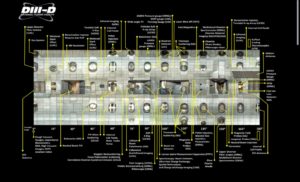
The current diagnostic set installed on DIII-D exceeds 100 individual diagnostics and is the result of many productive collaborations among the over 130 participating institutions. This set is continually expanding, as DIII-D offers a very flexible environment supporting new and innovative diagnostics. Furthermore, developing and fielding a diagnostic on DIII‑D remains an essential involvement for many research groups, with diagnostic work offering the capacity for direct participation in experiments and scientific discoveries and opening an exceptionally engaging and formative path for students.
Data Systems and Computing
The computing infrastructure at DIII-D enables cutting-edge science across many research areas and promotes seamless collaborations among different institutional partners. At its core, this involves maintaining the computers that are essential to tokamak operations, diagnostics, and control. Data from these systems are managed and shared with the domestic and international community from multiple data storage and analysis servers offering both short- and long-term data reaching as far back as 1988. DIII-D data are open but controlled; all research data are available to all users.
Beyond experiment operation and data storage, the scientists at DIII-D pioneer novel analysis tools and techniques. Some of these are customized for specific experiments at DIII-D, while others are prototyped here before wider application throughout the community. Furthermore, DIII-D works with collaborators to integrate their tools and expertise into the program. Notably, there is support for custom user workflows for data analysis in addition to a suite of automated analyses.
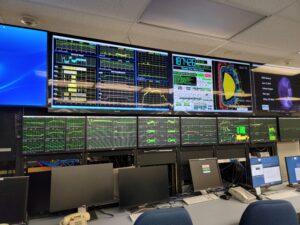
DIII-D also plays a leading role in the community by providing mechanisms for remote collaboration and connection to external systems. Fully remote operations are supported with live video, audio, and data feeds directly to/from the control room, and experiments led by off-site colleagues are a regular part of the program. Additionally, given DIII-D’s status as a user facility, DIII-D collaborators benefit from access to the powerful resources under the DOE Office of Science umbrella. Fast network connection to these systems is offered through the Energy Sciences Network (ESnet), with DIII-D connected by dual 100 Gb/s dedicated circuits. A 100 Gb/s Science Collaboration Zone with a dedicated Data Transfer Node (DTN) Array allows data to be moved at close to line speed. The massive compute power available from DOE Office of Sciences Supercomputing facilities is accessible with several workflow tools, and its on-demand availability is being leveraged to perform complex analysis quickly enough to inform experiments as they are run.
User Support
The DIII-D program provides direct support to users to facilitate their research. Users engage with the program to determine the associated support that is required (a Record of Discussion must be included with proposals in order to plan for direct program support in addition to the potential award – more details can be found here); this can include engineering and technical support for hardware projects. Office and telecommunications capabilities are provided for both short- and long-term users. The detailed list of support resources is available here.
